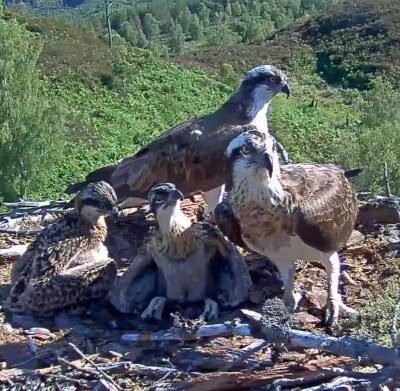Wildlife Monitor (Loch Arkaig Pine Forest Ospreycam Volunteer)

As a Loch Arkaig Pine Forest Ospreycam volunteer, which is one of our Wildlife Monitor roles, you will be a key member of the team that shares news from our two osprey nests within the Ancient Caledonian Pine Forest.
This role is specifically to monitor the camera set up at the osprey nests, where there has been successful breeding since 2017. This role is for you if you prefer to volunteer with us from the comfort of your own home! You don't need to live near Loch Arkaig Pine Forest for this role - we welcome applications from anywhere in the UK!
You will snip key footage from the cameras for your one allocated day per week, selecting footage for sharing on our website and social media. Full training will be given.
For this role you will need access to a Windows PC, have good internet speed (at least above 5MBS Download speed) and be available on one or two days per week throughout the breeding season (April to September) to review footage. You also need to have a reasonable degree of skill on computers and in using email and websites, but you don't need to be an expert, or indeed an osprey expert.
NB If you do not need to visit the site (as per some of the further info about the role when you scroll down the advert - this is generic information for all Wildlife Monitor roles).
You will be joining a team of Ospreycam volunteers. 7 of these snip footage, 1 provides a nest activity overview for the chat on our website and one counts fish brought to the nest and provides summary statistics for this. They are a wonderful team and we meet at the end of the season for lunch and a walk or activity to celebrate the camera year!
The ancient Caledonian pine forest to the south of Loch Arkaig is a fairly recent exciting acquisition to the Woodland Trust estate in Scotland. We are working with the local community group Arkaig Community Forest, to restore this degraded forest slowly and sensitively over time. It’s already a haven for native wildlife (raptors, otters, red squirrels and more live here).
But some areas of the forest have been planted with non-native tree species whilst others have been overgrazed by deer.
Our two osprey nests are amongst several raptor nests we have on the site and as we restore the forest we hope to continue to improve habitat for all wildlife.